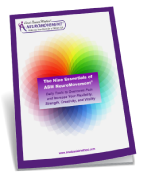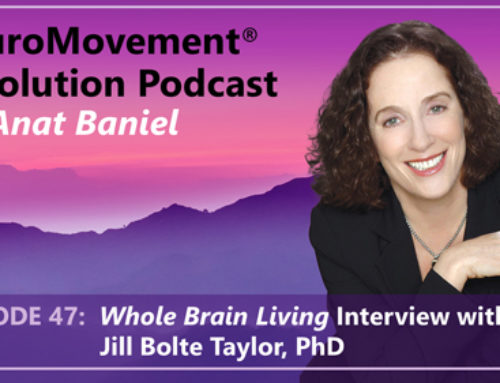Autism Understood as a Brain Movement Disorder
Autism Spectrum Disorder (ASD) is most commonly thought of as a brain disorder in the areas of language, communication, and social behaviors.
Autism Speaks defines ASD as: “…a group of complex disorders of brain development. These disorders are characterized, in varying degrees, by difficulties in social interaction, verbal and nonverbal communication and repetitive behaviors.”
Web MD defines it as: “a brain disorder that often makes it hard to communicate with and relate to others.”
The Story of John, a 4-Year-Old with Autism
From the very first child I worked with that was diagnosed with autism, I was struck by the degree with which his movements were undifferentiated and disorganized. This was also true for John, (not his real name), a four-year-old boy, who had many of the typical symptoms of children with ASD: few words and inability to formulate coherent sentences, no eye contact, difficulties around eating and digestion, and lack of social interactions.
However, what struck me most was that even though John was able to walk independently into my office, he was unstable on his feet and seemed like he would fall down with the slightest push. He was disoriented and drooling slightly; and his mother told me that he had very poor fine motor coordination.
When I began working with John, I quickly realized how undifferentiated his movements were. His brain didn’t map his body with the degree of detail and fullness needed for him to be able to make sense of his world on all levels: motor, sensory, cognitive, and interpersonal/emotional.
How Does Anat Baniel Method® NeuroMovement® Understand ASD?
Children with ASD often exhibit clear movement developmental delays and disorganization, which are usually labeled and discarded as “clumsiness.” Instead, the focus of therapeutic intervention is primarily, if not exclusively, placed on cognitive, behavioral, and relational challenges.
We contend that ASD starts as a movement disorder (Chester and Calhoun, 2012) which leads to the typical symptoms of this condition. The movement disorder itself results from the disruption in the underlying neurological process of differentiation in the brain (Merzenich, 2003). When the brain’s ability to differentiate and create new connections and patterns is compromised, it interferes with the spontaneous process of mapping in the brain. The increasingly complex and refined motor, cognitive, emotional, and behavioral skills cannot develop.
This disruption can be observed in the way children with ASD move from as early as three to six months old. Children diagnosed with ASD vary from the norm in how they roll over, crawl, and sit up, doing so with greatly reduced differentiation (Teitelbaum, 1998; Phagava et al, 2008; Segawa, 2010).
The function of the brain is to organize movement (Wolpert, 2011). Movement, combined with attention to the feeling of self, promotes rapid creation of new connections and new “mapping” in the brain (Merzenich, 1996). It is a primary mechanism through which the brain receives new information, grows, organizes itself and learns. When we are able to facilitate and accelerate the process of differentiation of movement, surprising cognitive and behavioral improvements spontaneously occur.
The Underlying Problem
In order to help the child with ASD, we need to somehow awaken and support the brain’s ability to differentiate and create new connections and effective patterns. But in order for the brain to differentiate, it first has to perceive differences between one thing and another; what we call discrimination. (Merriam-Webster Online defines discrimination as “the ability to understand that one thing is different from another thing.”)
The ability to perceive differences is the source of information for the brain. What I have observed working with John and other children with ASD, is that they do not seem to notice differences that other kids will easily notice and respond to. It’s like they are in a fog and the world is a swirl, a blur, that doesn’t make sense.
As my colleagues and I worked with John over a period of a few months, he greatly improved. His movements got stronger and coordinated, his language abilities were growing daily, and he became much more aware of himself and his surroundings and was much happier.
However, no matter how hard his parents and teachers tried, he still wet his pants. Then it occurred to me: since John was in diapers that absorbed the fluid, he couldn’t feel clearly enough the difference between wet and dry. By using a dry and a wet face towel, touching different parts of his body and asking him to tell me whether it was the dry or wet towel that he felt, John was quickly able to notice the difference between dry and wet. He has never wet his pants since.
How Can We Help the Child with ASD?
If we accept that the underlying functional disorder in ASD is the brain’s challenge in its ability to perceive differences, which compromises its ability to differentiate and learn, then when trying to help the child on the autism spectrum, we need to find ways to help the brain become better at perceiving differences.
Without this process of differentiation being fully available to the child’s brain, the brain cannot do its job of putting order in the disorder and making sense out of the stimulation coming in through all of the senses.
ABM NeuroMovement uses the Nine Essentials, all helping the brain perceive differences, thus waking up the process of differentiation, culminating in integration of new skills. In other words, it helps the brain become a stronger and better brain.
Learn more about how NeuroMovement can help children on the autism spectrum.
Try this NeuroMovement Lesson to experience the transformational power of Movement with Attention.
Anat Baniel will be presenting on this topic at two upcoming Autism Conferences:
12th Annual AutismOne Conference: May 21 – 25, 2014 in Chicago, IL.
ICare4Autism International Autism Conference: June 30 – July 2, 2014 in NYC, NY.
I’d love to hear about your experiences on social media. And I invite you to attend one of my upcoming workshops.





